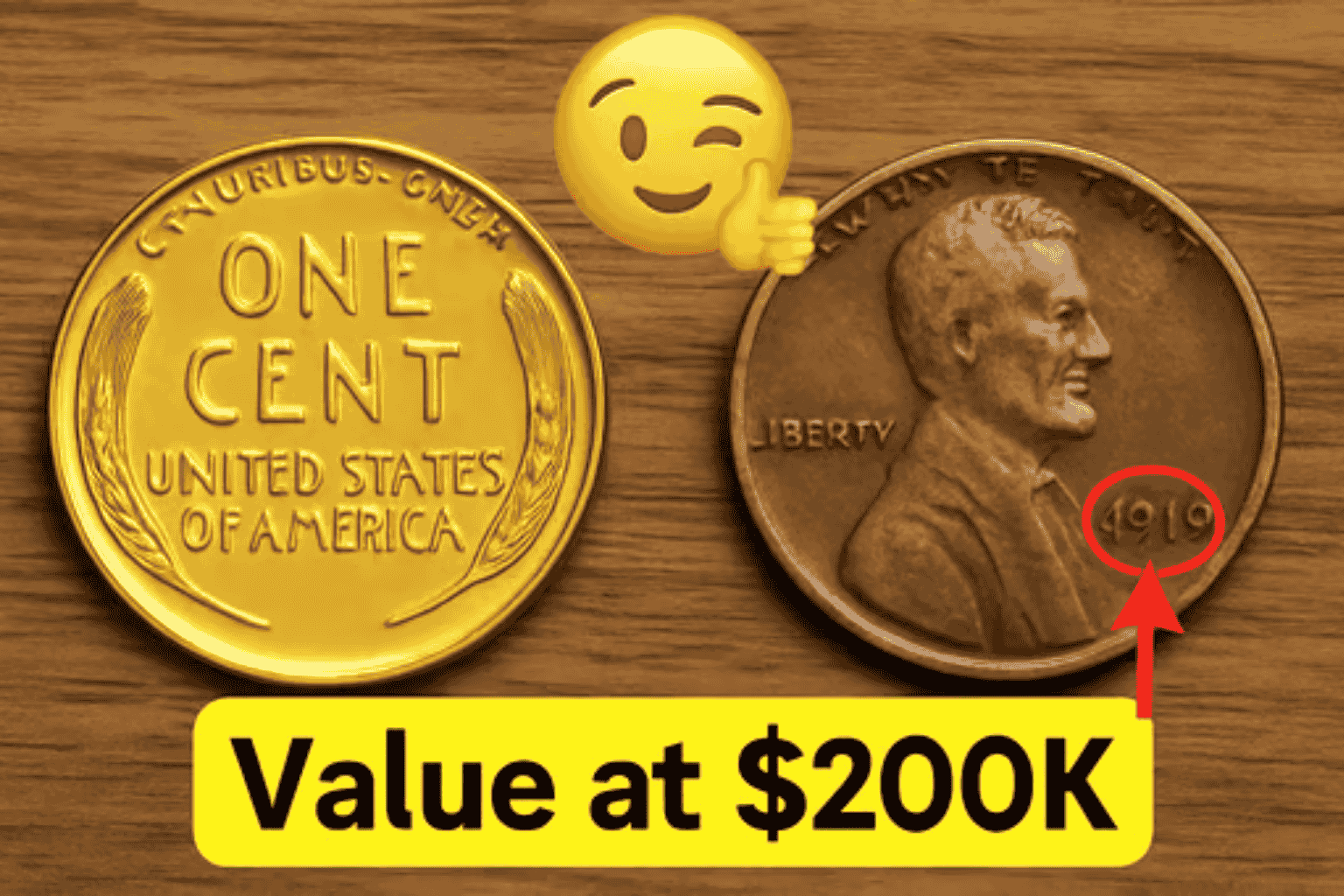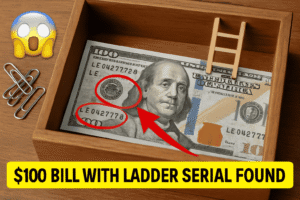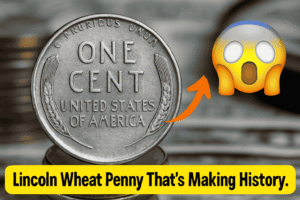Let’s be real—when’s the last time you actually looked at a penny? Most of us don’t even bother picking them up off the sidewalk anymore. They rattle around in junk drawers, car cupholders, and maybe the bottom of your backpack from 2013. But here’s the twist: one of those dusty, forgotten coins could be worth as much as $200,000.
Yeah, you read that right. A single penny. Worth more than a Porsche.
The Coin That Defied Wartime Logic
So, what’s the deal with this magical penny? It’s called the 1943 Copper Lincoln Wheat Penny, and it’s basically the holy grail for coin collectors.
Here’s what went down. In 1943, the U.S. was neck-deep in World War II. Copper was in high demand for ammo and other military supplies, so the U.S. Mint decided to make pennies out of steel coated in zinc that year. Practical move, right?
But somehow, a few copper blanks—those little round metal discs before they become coins—got left in the minting machines. Total accident. Nobody noticed at first. But when those copper 1943 pennies hit circulation… well, the legend began.
And because they were never meant to be made, only a tiny handful exist today.
Why It’s Worth So Much
Okay, it’s old. But old doesn’t always mean valuable. There’s a mix of factors here:
| Factor | Why It Matters |
|---|---|
| Rarity | Only a few 1943 copper pennies are known to exist. |
| Mint Error | It was a total fluke—errors drive collector demand. |
| Historical Context | WWII made copper scarce, which adds to the mystique. |
| Condition | A well-preserved version can bring top dollar. |
| Metal Composition | Copper pennies were not supposed to be made in ’43. |
Now, when one of these turns up at auction, bidding can get real spicy. We’re talking five, sometimes six figures. The cleanest specimens have sold for $204,000 and up.
Could One Be in Your Pocket?
It’s a stretch, but yeah—technically, it could happen. These coins were made for everyday use, so they didn’t start their lives in museums. Some might still be floating around in change jars, estate sales, old piggy banks…
Want to check? Here’s a quick DIY test:
- Find a 1943 penny.
- Stick a magnet to it.
- If it sticks, it’s made of steel (common).
- If it doesn’t stick, hello copper—now we’re talking.
But don’t freak out just yet. Fakes exist. The only way to know for sure is to get it evaluated by a professional coin grader like PCGS or NGC.
Not Just the 1943: Other Wheat Pennies Worth Money
Think the 1943 copper is the only big-ticket item? Nah. There’s a handful of Wheat Pennies that can turn a lucky find into a minor payday:
| Coin | Estimated Value | Why It’s Special |
|---|---|---|
| 1909-S VDB | $700–$2,500+ | First year of the Lincoln cent, rare mint. |
| 1914-D | $200–$3,000+ | Low mintage numbers in Denver. |
| 1922 “No D” | $500–$3,500+ | Mint mark error—D is missing. |
| 1944 Steel Penny | $75,000–$110,000 | Opposite error of the 1943 copper. |
| 1955 Doubled Die | $1,000–$15,000+ | Misprinted text—doubling on the front. |
These are just the MVPs. Plenty of other pennies from 1909–1958 carry value, especially if they’re in good shape or show minting quirks.
Coin Collecting: Part Hobby, Part Treasure Hunt
Look, you don’t need to become a full-blown numismatist (yes, that’s a real word) to enjoy this. You just need a curious eye, maybe a magnifying glass, and a reason to dig through grandma’s old coin jar.
There’s something romantic about the whole thing. The idea that a dusty, overlooked coin could hold life-changing value? That’s the kind of magic the stock market doesn’t give you.
And even if your coin turns out to be worthless, you still touched a piece of history. That 1941 penny? It was probably in someone’s pocket during the war. That 1920 one? Maybe bought a movie ticket during Prohibition.
Coins are tiny time machines. And sometimes, they’re lottery tickets too.
Wait, Should I Clean My Penny First?
Nope. Absolutely not. Don’t even think about it.
Cleaning a coin—even gently—can ruin its value. It scratches the surface, messes with the patina, and screams “amateur” to collectors. If you think you’ve got something special, just put it in a soft container or wrap it in tissue and take it to a pro.
FAQs
How can I tell if my 1943 penny is steel or copper?
Try a magnet. Steel sticks. Copper doesn’t.
Could a rare penny really be in my change jar?
Unlikely, but not impossible. That’s what makes it fun.
Why didn’t they make all the 1943 pennies in copper?
WWII. Copper was needed for bullets and wiring.
What does “VDB” stand for on the 1909 penny?
Victor David Brenner—the guy who designed Lincoln’s face.
Should I clean my old coins before selling them?
Nope. Cleaning ruins value. Leave ‘em as-is.



